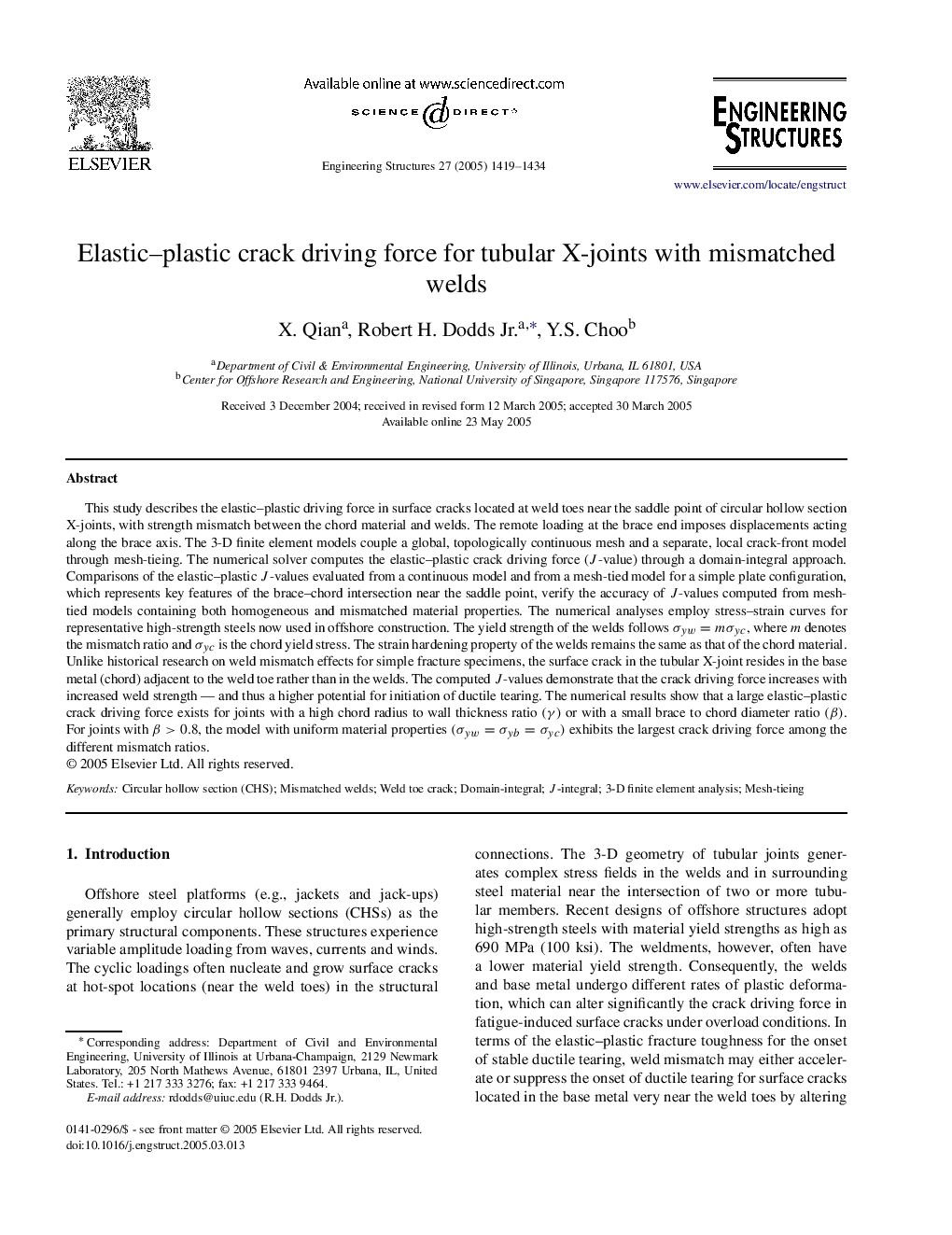| کد مقاله | کد نشریه | سال انتشار | مقاله انگلیسی | نسخه تمام متن |
|---|---|---|---|---|
| 10286951 | 504476 | 2005 | 16 صفحه PDF | دانلود رایگان |
عنوان انگلیسی مقاله ISI
Elastic-plastic crack driving force for tubular X-joints with mismatched welds
دانلود مقاله + سفارش ترجمه
دانلود مقاله ISI انگلیسی
رایگان برای ایرانیان
کلمات کلیدی
موضوعات مرتبط
مهندسی و علوم پایه
علوم زمین و سیارات
مهندسی ژئوتکنیک و زمین شناسی مهندسی
پیش نمایش صفحه اول مقاله

چکیده انگلیسی
This study describes the elastic-plastic driving force in surface cracks located at weld toes near the saddle point of circular hollow section X-joints, with strength mismatch between the chord material and welds. The remote loading at the brace end imposes displacements acting along the brace axis. The 3-D finite element models couple a global, topologically continuous mesh and a separate, local crack-front model through mesh-tieing. The numerical solver computes the elastic-plastic crack driving force (J-value) through a domain-integral approach. Comparisons of the elastic-plastic J-values evaluated from a continuous model and from a mesh-tied model for a simple plate configuration, which represents key features of the brace-chord intersection near the saddle point, verify the accuracy of J-values computed from mesh-tied models containing both homogeneous and mismatched material properties. The numerical analyses employ stress-strain curves for representative high-strength steels now used in offshore construction. The yield strength of the welds follows Ïyw=mÏyc, where m denotes the mismatch ratio and Ïyc is the chord yield stress. The strain hardening property of the welds remains the same as that of the chord material. Unlike historical research on weld mismatch effects for simple fracture specimens, the surface crack in the tubular X-joint resides in the base metal (chord) adjacent to the weld toe rather than in the welds. The computed J-values demonstrate that the crack driving force increases with increased weld strength - and thus a higher potential for initiation of ductile tearing. The numerical results show that a large elastic-plastic crack driving force exists for joints with a high chord radius to wall thickness ratio (γ) or with a small brace to chord diameter ratio (β). For joints with β>0.8, the model with uniform material properties (Ïyw=Ïyb=Ïyc) exhibits the largest crack driving force among the different mismatch ratios.
ناشر
Database: Elsevier - ScienceDirect (ساینس دایرکت)
Journal: Engineering Structures - Volume 27, Issue 9, August 2005, Pages 1419-1434
Journal: Engineering Structures - Volume 27, Issue 9, August 2005, Pages 1419-1434
نویسندگان
X. Qian, Robert H. Jr., Y.S. Choo,